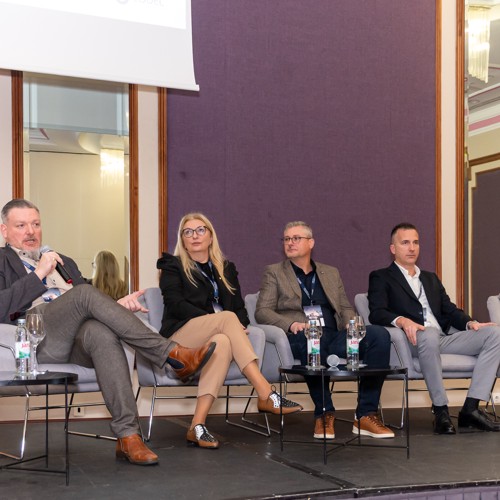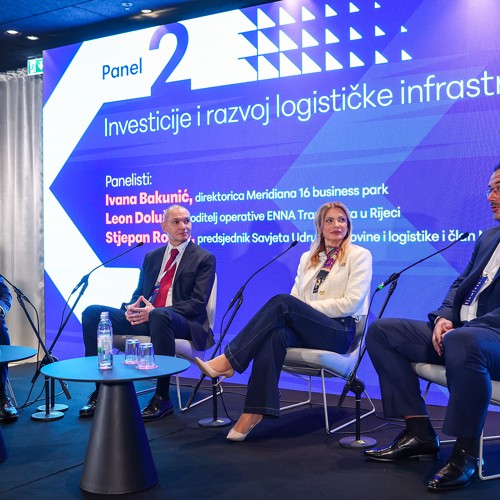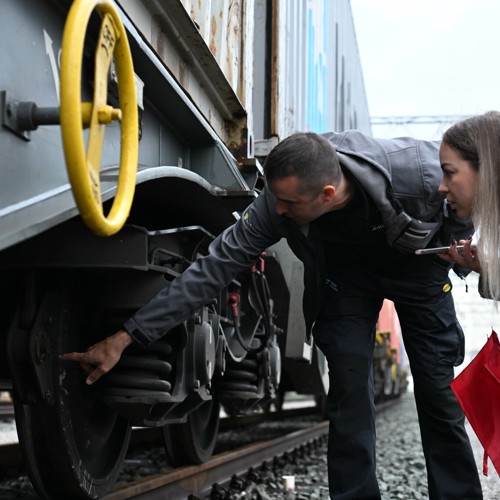Interesting facts about the Rijeka Gateway terminal
The largest and most advanced container terminal in this part of Europe
Date publishedMay 9, 2025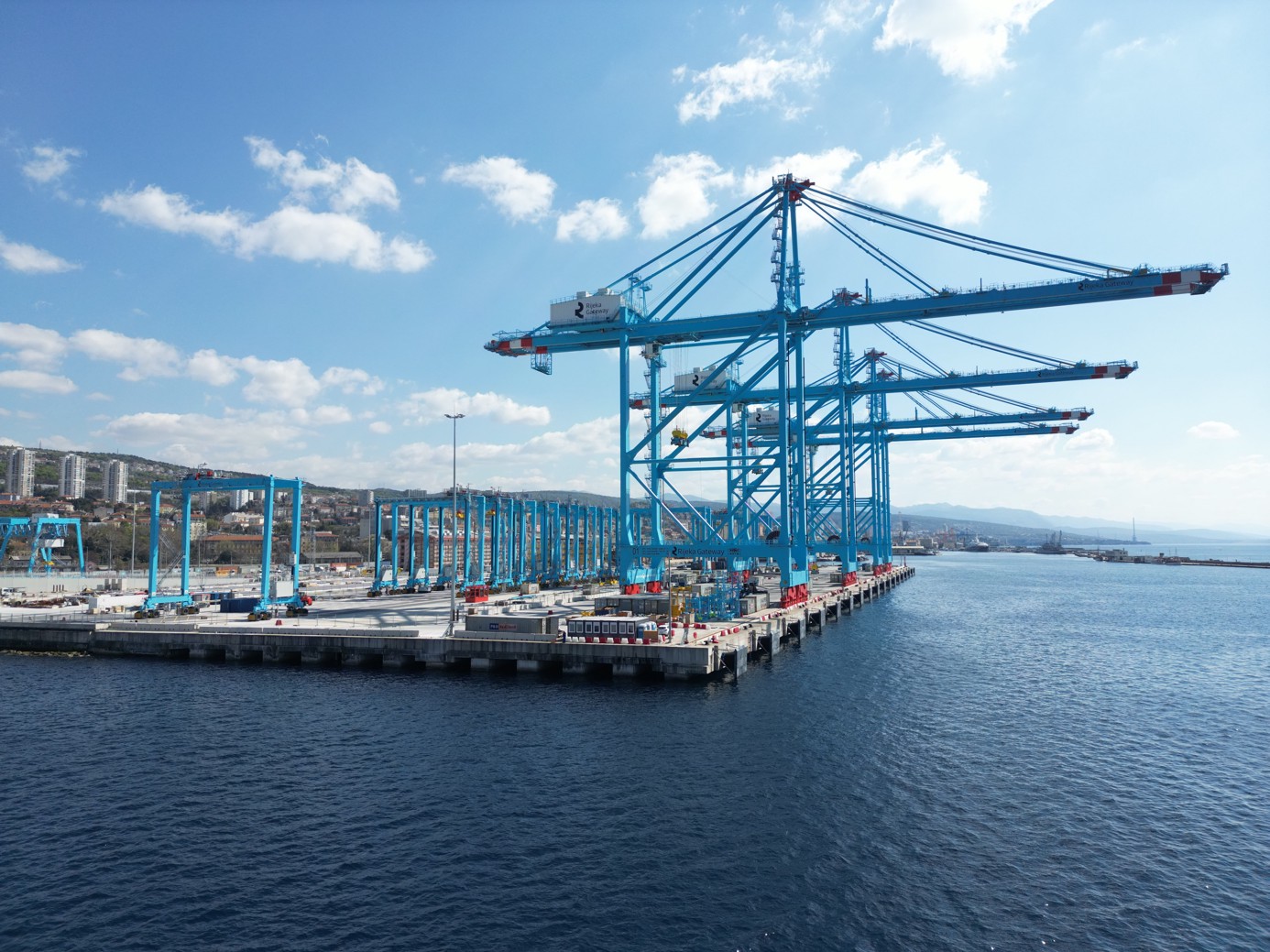
Zagreb, 7 May 2025 - Construction works on the new Rijeka Gateway terminal are in their final phase, with all key equipment installed and currently undergoing testing.
On this occasion, we bring you a series of interesting facts about the new terminal, which will be the largest and most advanced container terminal in this part of Europe—and also one of the most sustainable.
Terminal Area
The terminal will cover 20 hectares, which is equivalent to 28 standard football fields of about 7,000 m² each (or 30 football fields at the Kantrida stadium).
The quay of the terminal could accommodate six large Boeing 747 (Jumbo Jet) passenger aircraft, each about 70 meters in length.
Cranes
The STS (super-post-panamax generation) cranes at the Rijeka terminal reach an impressive height of 138 meters when the boom is raised—equivalent to a 30-story skyscraper.
Due to their height, they can serve the newest generation of vessels with a capacity of up to 24,000 TEU.
The cranes were manufactured by the Chinese company ZPMC. They were shipped from Shanghai, and the journey to Rijeka took about 70 days. The loading, transport, and unloading process took approximately four months.
Each crane weighs 1,700 tons and can handle cargo up to 100 tons. For comparison, a Boeing 737 weighs about 40 tons, so each STS crane could lift two of them simultaneously.
Each STS crane is named after remarkable women who left their mark on the history of Rijeka and the surrounding area—Antonija Reljac, Zora Matijević, Ada Felice Rošić, and Snježana Pejčić. The names were selected through a public survey of Rijeka’s citizens.
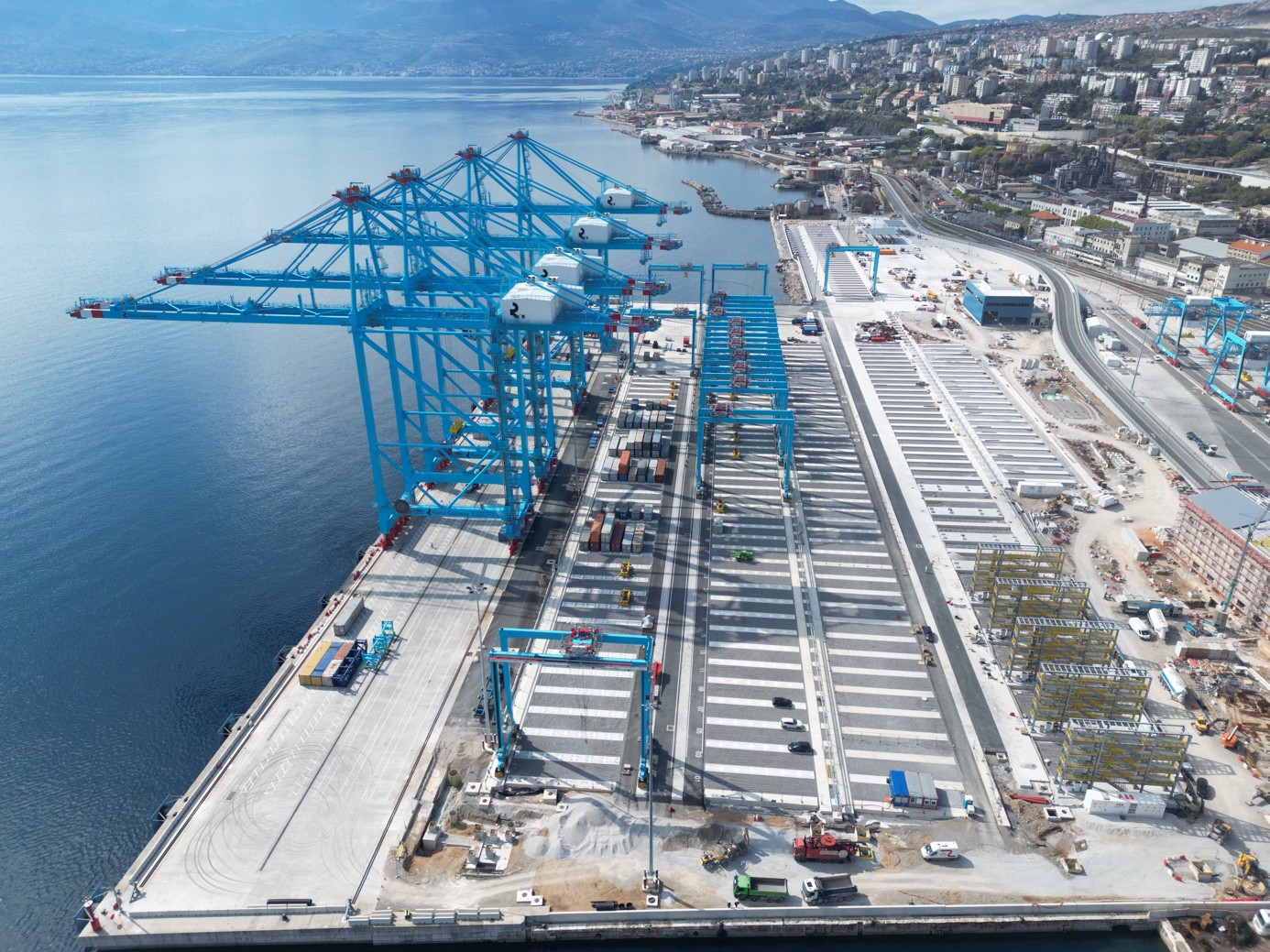
Sustainability
Even during the site preparation phase, 403 tons of asbestos were safely removed and disposed of from the Zagrebačka obala area.
As much as 95% of the terminal's equipment will be electric, and the energy used will come exclusively from sustainable sources.
Digitalization
A private 5G network—one of the first in Croatia—has been installed across the entire terminal area. Cranes, terminal vehicles, and other equipment are connected to the 5G network, enabling advanced digital operation.
The 5G network ensures that all machines at the terminal follow the shortest possible routes, which reduces energy consumption, saves time, and consequently lowers noise levels at the terminal.
Water Management
The terminal features modern and highly efficient water management systems. The rainwater drainage system consists of two independent networks that channel all water from storage and traffic areas to oil and grease separators. As the water passes through several chambers, fine sediments, oils, and fats are removed, after which the purified water is released into the sea.
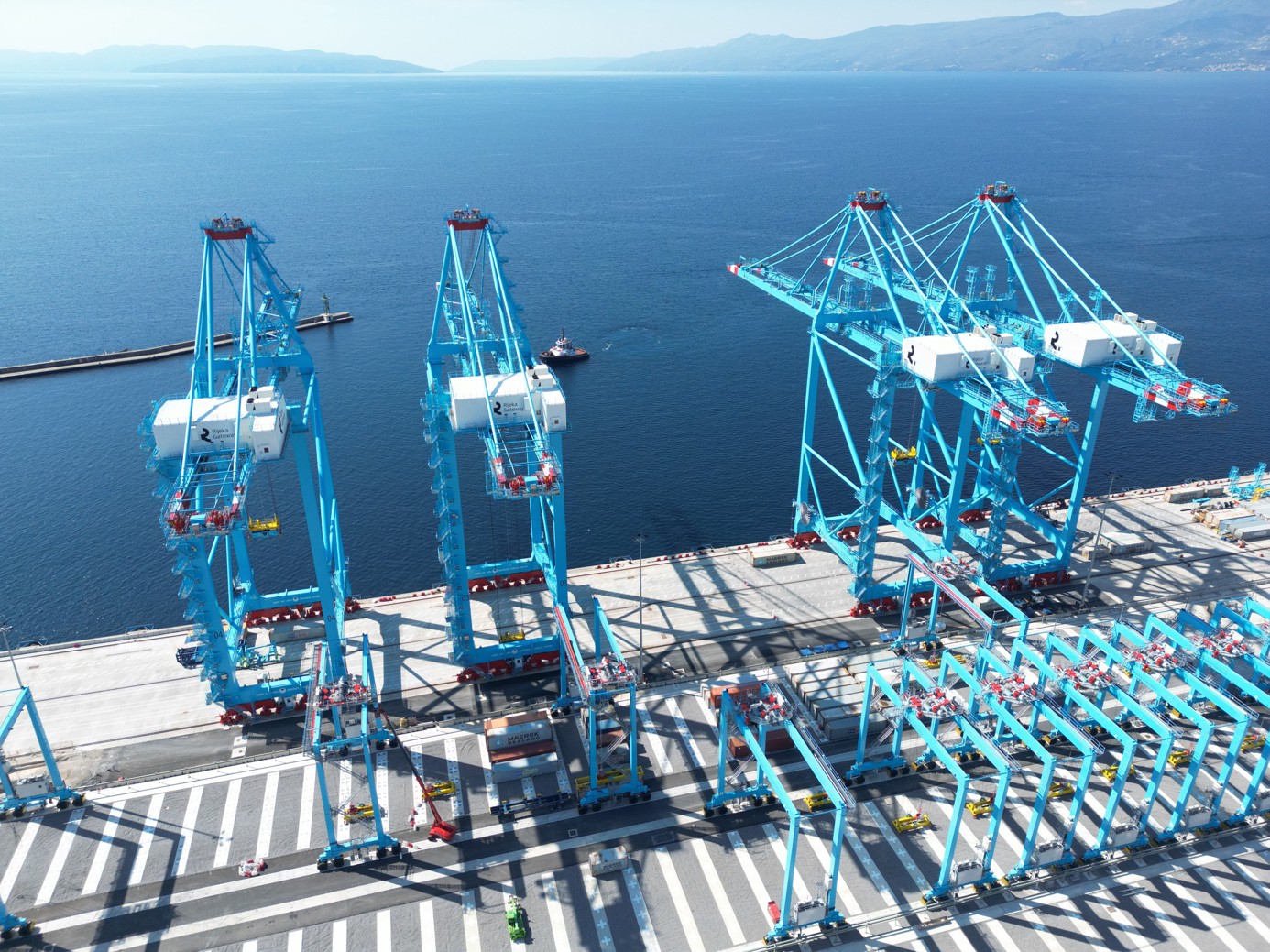
Noise Reduction
The use of soft landing technology on cranes ensures quieter container handling by minimizing the loud metal-on-metal impacts typically present at terminals without this technology.
Light Pollution Reduction
The terminal is equipped with LED lighting with controlled light beams that illuminate only the terminal area and minimize lighting outside its boundaries.
Warehouse 22
The main building of the Rijeka Gateway will be located within the Metropolis complex, which consists of five port warehouses. This Art Nouveau cultural monument was built between 1909 and 1913.
Warehouse 22, which is being renovated in cooperation with heritage conservators, will serve as the central building for terminal staff.
The entire complex is named Metropolis because the hanging corridors between the warehouses resemble the set design of Fritz Lang’s iconic film Metropolis.
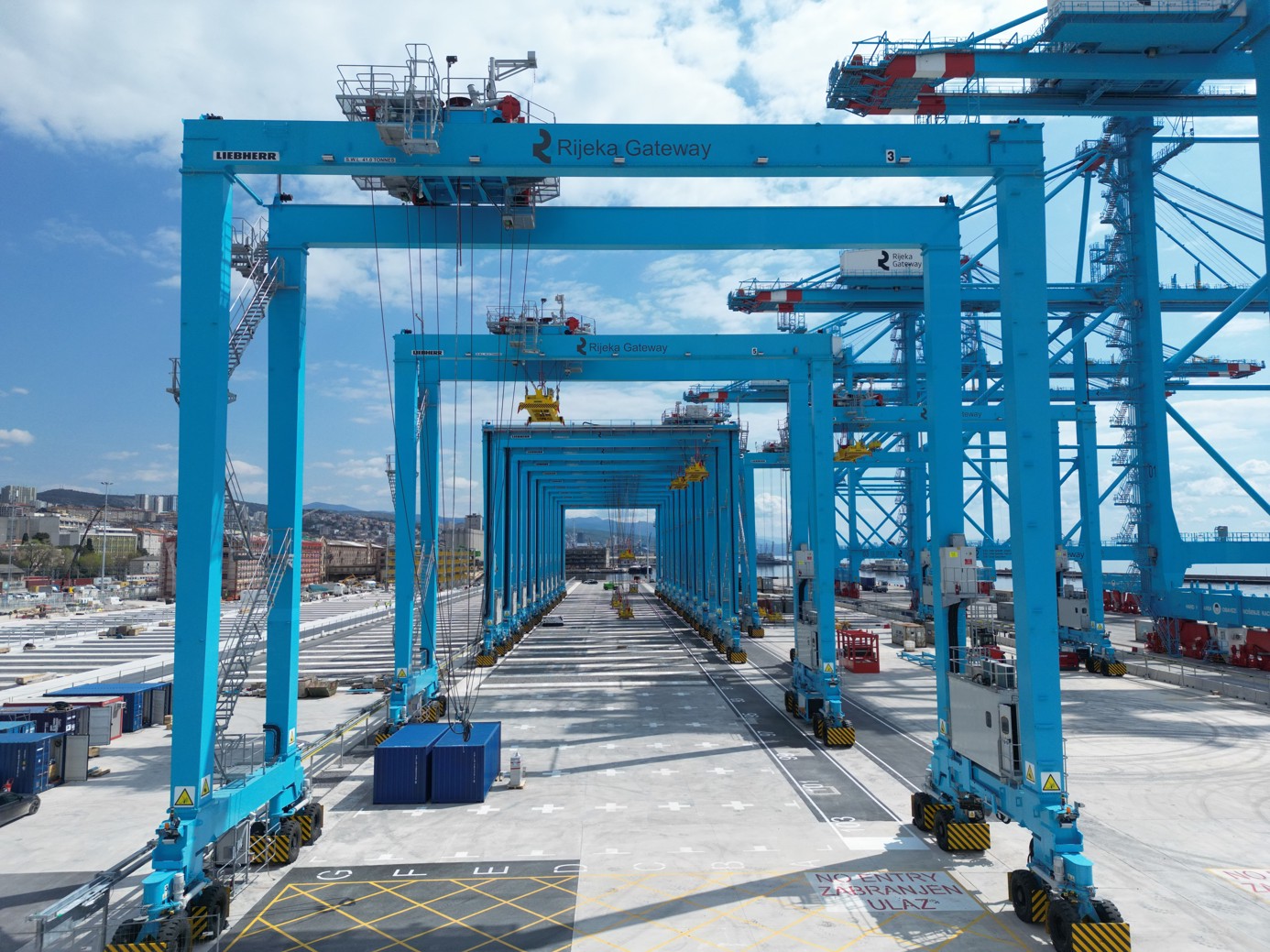
Rijeka Gateway is a joint investment by the ENNA Group and APM Terminals.
The first phase includes an investment of €210 million and encompasses the construction of the terminal’s basic infrastructure, the procurement of state-of-the-art container cranes, and the establishment of the necessary logistics support.
The second phase plans an additional investment of €180 million, to be carried out over the next 10 years.
In the first phase, the terminal will have an operational quay length of 400 meters, a depth of 20 meters, and an annual throughput capacity of 650,000 TEU, with the ability to accommodate ships of up to 18,000 TEU.
The second phase includes extending the quay to 680 meters, which will increase annual throughput capacity to 1,055,000 TEU and allow accommodation of vessels up to 24,000 TEU.

